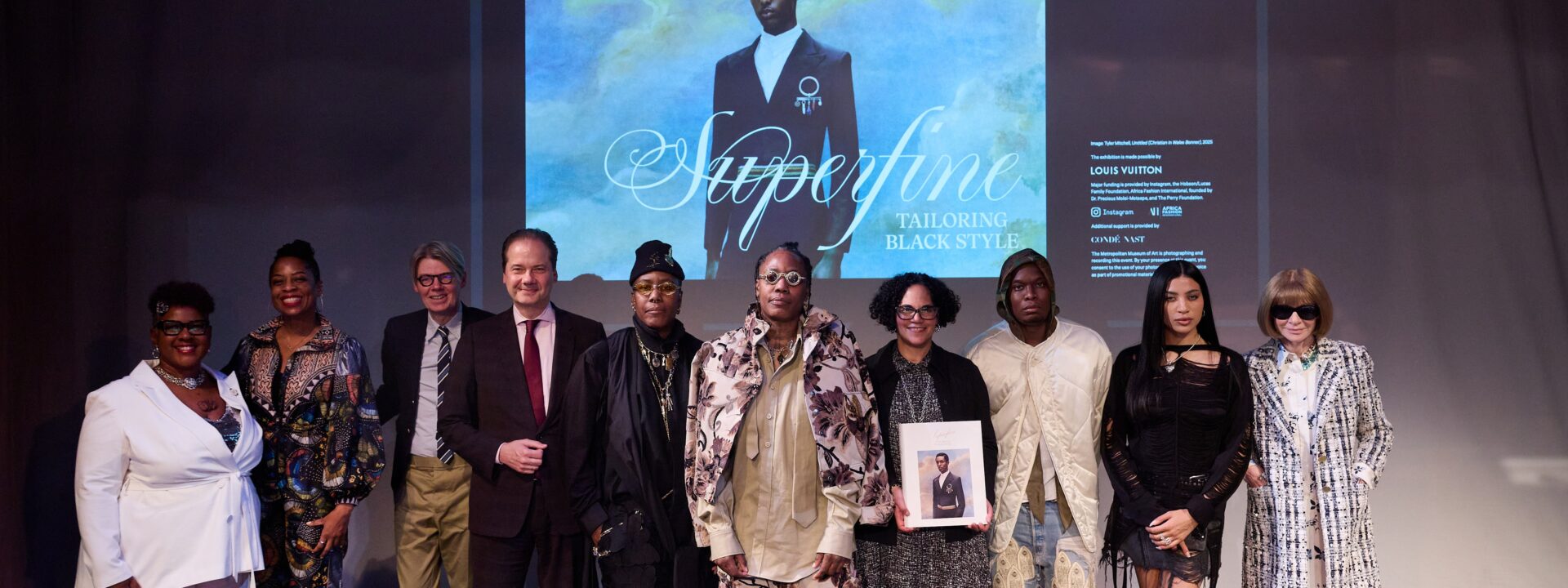Last night, as part of its series leading up to the 2025 Met Gala, The Metropolitan Museum of Art held an intimate panel discussion previewing the upcoming exhibition, Superfine: Tailoring Black Style. The event took place at the Billie Holiday Theatre in Bed-Stuy and was moderated by cultural scholar Monica L. Miller, author of Slaves to Fashion: Black Dandyism and the Styling of Black Diasporic Identity, a key inspiration for the exhibition.
Guests were welcomed by the theatre’s current exhibition, We Love You Black Woman, where they could browse and enjoy refreshments before the ticketed event began. As the doors opened, attendees settled into the cozy, dimly lit space, chatting quietly. True to Bed-Stuy’s stylish reputation, guests of all ages arrived dressed to impress.
The evening began with opening remarks from Max Hollein, the Met’s director and CEO, followed by an introduction to Miller, who is guest-curating the exhibition, set to debut next month.
“We want you to not only see what’s in store for this exhibition but also to understand that community is at the core of our mission,” Hollein said. “We’re honored to bring this conversation to Brooklyn, where art and culture thrive.”
Miller opened the discussion with a slideshow previewing some of the artwork, garments, and jewelry that will be featured. These pieces highlighted themes like ownership, distinction, disguise, freedom, and heritage—central to the exhibition. Designers showcased included L’Enchanteur, Who Decides War, Ib Kamara, Agbobly, and a kaftan once worn by the late Vogue editor André Leon Talley.
Next, the evening’s special guests took the stage to discuss Black creative entrepreneurship: Soull and Dynasty Ogun of L’Enchanteur, and Tela D’amore and Ev Bravado of Who Decides War.
The panelists touched on topics like streetwear’s perception, sustainability through community, and how the term “entrepreneur” applies to their work. They also shared personal stories about their earliest inspirations.
“Dynasty and I are from Flatbush,” Soull said. “Our home was already a melting pot—our mom is from Dominica, our dad from Nigeria, and we’re first-gen. Outside, we represented Brooklyn, but inside, it was Caribbean and African influences everywhere—music, food, how our parents dressed us.”
Bravado added, “My grandmother had a church nearby on Bedford Avenue. Sunday mornings, as many Black and Caribbean families know, were when you dressed your best. My dad, a tailor from Barbados, and my mom from St. Vincent, made getting ready an event.”
D’amore spoke on sustainability and community: “Being intentional about what you create is something you owe to your community. When you pour your heart into it, it comes back to you tenfold. A huge part of our success has been world-building and nurturing that connection.”“Our community should also have access to that world.”
—Dynasty Ogun
Photo: Argenis Apolinario
When asked what visitors should take away from the exhibition, Miller said: “So many things. I hope we’ve created different entry points for people—through the themes—so they recognize things that feel familiar, whether from 200 years ago or happening right now. I want people to see how clothing lets us express who we are, reimagine ourselves, and honor our identities or heritage. But I also hope some visitors find something deeply personal—maybe a piece that reminds them of their uncle, father, mother, or someone special. There’s enough in this exhibition to connect with people in that intimate way. So, I hope for many ways in—and maybe even a touch of soul.”
—Tela D’amore and Ev Bravado
Photo: Argenis Apolinario
